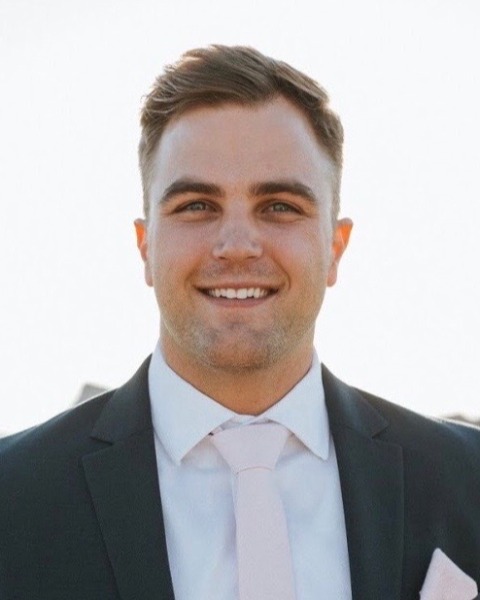Emergency Medicine: Quality Improvement
Category: Abstract Submission
Emergency Medicine XIV
58 - Self Service to Full Service: Improving the Pediatric Emergency Department Utilization of Onsite Outpatient Pharmacy for Prescription Fulfillment
Monday, April 25, 2022
3:30 PM - 6:00 PM US MT
Poster Number: 58
Publication Number: 58.407
Publication Number: 58.407
Claci C. Ayers, Vanderbilt University School of Medicine, Hermitage, TN, United States; Clark J. Thornton, Monroe Carell Jr. Children's Hospital at Vanderbilt, Nashvill, TN, United States; Heather Canady, Monroe Carell Jr. Children's Hospital at Vanderbilt, NASHVILLE, TN, United States; Erin Quinn, Monroe Carell Jr. Children's Hospital at Vanderbilt, Nashville, TN, United States; David P. Johnson, Monroe Carell Jr. Children's Hospital at Vanderbilt, Nashville, TN, United States; Elizabeth Humphreys, Monroe Carell Jr. Children's Hospital at Vanderbilt, Nashville, TN, United States; Cristina Estrada, Monroe Carell Jr. Children's Hospital at Vanderbilt, Brentwood, TN, United States; Barron Frazier, Monroe Carell Jr. Children's Hospital at Vanderbilt, Nashville, TN, United States

Clark J. Thornton, MD
Resident
Monroe Carell Jr. Children's Hospital at Vanderbilt
Nashvill, Tennessee, United States
Presenting Author(s)
Background: Pediatric emergency medicine (PEM) literature has shown that about 33% of prescriptions remain unfilled when prescribed from a pediatric emergency department (PED). Research has shown that an onsite outpatient pharmacy (OOP) improves fulfillment rates. At our institution, a pilot program was initiated in 07/2021 to expand outpatient pharmacy hours to better serve our patients.
Objective: Our SMART aim is to increase the percentage of PED discharge prescriptions sent to the OOP during open hours from 5.8% to 70% of prescriptions by 06/2022.
Design/Methods: A team of PEM providers and pharmacists was formed in early 07/2021 to develop a key driver diagram (Fig.1). Retrospective baseline data was obtained from 01/2019-06/2021. Then data was followed prospectively in consecutive weekly groups. Statistical process control charts were used to analyze data. Nelson rules were used to detect special cause variation. The primary outcome was the percentage of prescriptions sent to the OOP from the PED during open pharmacy hours. Process measure monitored use of printed prescriptions. Unfulfilled prescriptions at the OOP from the ED were monitored as a balancing measure.
Results: P-charts were used to analyze the primary outcome, process measure, and balancing measure. Baseline data revealed onsite outpatient pharmacy utilization of 5.8%. With the expansion of pharmacy hours and interventions surrounding pharmacy hour awareness to providers, special cause variation was achieved with a center-line shift to 49.7% of prescriptions sent to OOP by the end of 08/2021 (Fig.2). Higher reliability interventions including setting the OOP pharmacy as the preferred pharmacy in the electronic medical record for all PED visits, a map to pharmacy included in the After Visit Summary and PEM fellows enrolled as project champions led to a shift in mean to 63.6%. Another shift from 63.6% to 71.1% occurred as OOP prescribing became standard of practice with provider feedback (Fig.2). The printed prescription rate decreased from 42.8% to 6.2% (Fig. 3). As the percentage of prescriptions sent to the pharmacy significantly increased, unfilled prescription rate has remained stable during this period at 16%.Conclusion(s): Expansion of OOP hours of operation in partnership with quality improvement methodology were associated with an increase mean percent of prescriptions sent to an onsite outpatient pharmacy while maintaining the rate of unfilled prescriptions. The level 1 reliability interventions set a foundation so our team could utilize higher level reliability interventions such as EMR optimization to help us achieve our goal.
Figure 1: Key Driver Diagram.png)
Figure 2: P-Chart of the Weekly Rate of Prescriptions Sent to the OOP from the PED.png)
Objective: Our SMART aim is to increase the percentage of PED discharge prescriptions sent to the OOP during open hours from 5.8% to 70% of prescriptions by 06/2022.
Design/Methods: A team of PEM providers and pharmacists was formed in early 07/2021 to develop a key driver diagram (Fig.1). Retrospective baseline data was obtained from 01/2019-06/2021. Then data was followed prospectively in consecutive weekly groups. Statistical process control charts were used to analyze data. Nelson rules were used to detect special cause variation. The primary outcome was the percentage of prescriptions sent to the OOP from the PED during open pharmacy hours. Process measure monitored use of printed prescriptions. Unfulfilled prescriptions at the OOP from the ED were monitored as a balancing measure.
Results: P-charts were used to analyze the primary outcome, process measure, and balancing measure. Baseline data revealed onsite outpatient pharmacy utilization of 5.8%. With the expansion of pharmacy hours and interventions surrounding pharmacy hour awareness to providers, special cause variation was achieved with a center-line shift to 49.7% of prescriptions sent to OOP by the end of 08/2021 (Fig.2). Higher reliability interventions including setting the OOP pharmacy as the preferred pharmacy in the electronic medical record for all PED visits, a map to pharmacy included in the After Visit Summary and PEM fellows enrolled as project champions led to a shift in mean to 63.6%. Another shift from 63.6% to 71.1% occurred as OOP prescribing became standard of practice with provider feedback (Fig.2). The printed prescription rate decreased from 42.8% to 6.2% (Fig. 3). As the percentage of prescriptions sent to the pharmacy significantly increased, unfilled prescription rate has remained stable during this period at 16%.Conclusion(s): Expansion of OOP hours of operation in partnership with quality improvement methodology were associated with an increase mean percent of prescriptions sent to an onsite outpatient pharmacy while maintaining the rate of unfilled prescriptions. The level 1 reliability interventions set a foundation so our team could utilize higher level reliability interventions such as EMR optimization to help us achieve our goal.
Figure 1: Key Driver Diagram
.png)
Figure 2: P-Chart of the Weekly Rate of Prescriptions Sent to the OOP from the PED
.png)
